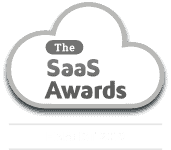Introduction
Successful staffing agencies fill customers orders faster than the competition and with lower turnover rates. How are they able to do it?
They are able to do this because they have mastered the art of recruiting and hiring the right candidates at the right time at the right rate. This is not different from how the manufacturing sector manages its “supply chain” with “Just in Time (JIT)” inventory. The manufacturing sector has mastered this using technology. Some of the same concepts can be applied to the staffing vertical.
In this article we will look at the best practices that can be adopted by the staffing industry to improve their “supply chain” i.e. hiring and recruitment of candidates.
Automation of recruitment process
Staffing agencies utilize Application Tracking Systems (ATS) to simplify the hiring process. There are numerous ATS vendors available in the market. How do you pick the ideal solution? Before making a decision on which ATS to employ, staffing agencies should evaluate the level of automation provided in the following areas, beyond the basic functionality.
Resume scanning and skills matching
The ATS solution should have the capability to scan candidate resumes and automatically input crucial data points into the system with a high degree of accuracy. Using Machine Learning and Artificial Intelligence, the ATS solution should be able to align candidates with job openings based on their qualifications, experience, and skills, thereby significantly enhancing the accuracy and efficiency of the hiring process.
Work History Verification
One of the major hurdles faced by staffing agencies in the hiring process is verifying work history. Agencies that perform this task well can outcompete their competitors. Currently, this is often done manually by internal staff or outsourced to a firm specializing in work history verification. This manual process involves making phone calls and sending emails to previous employers, who may not respond promptly. Improving this process is a great opportunity for ATS providers. Using publicly available information, much of the work should be automated. By leveraging Artificial Intelligence, the system should have the capability to perform employee verification accurately. You should select the ATS solution that partially or completely automates the work history verification process.
First Report of Injury (FROI)/Workers Compensation Claims Report
In staffing agency sectors such as Light Industrial and Construction, agencies may run FROI reports (which are not permitted in all states) to determine if a candidate has suffered prior workplace injuries. This information is gathered manually by accessing various state websites for FROI information. This is another area where an ATS solution should be able to automate the process.
Criminal Background Check
An ATS should be able to automate the criminal background check process by integrating with a third-party background check provider. This integration allows the ATS to automatically send the candidate’s name and social security number to the provider, which will then conduct the necessary checks and return the results to the ATS.
The ATS should also have the ability to be configured to accept or reject candidates based on the background check results. For instance, if a client allows misdemeanors but not felonies, the agency staff should be able to set the ATS to automatically reject candidates with a felony, but not those with a misdemeanor.
Furthermore, some ATS can also automate the process of obtaining consent from the candidate for the background check and provide the candidate with the option to view the results. This automation can streamline the process and minimize delays in the hiring process.
Automation of Hiring process
Once the right candidate has been identified for a position, the next steps involved in the hiring process should also be automated.
Automated Offer Letter
ATS should generate an electronic offer letter using the candidate’s information and send it electronically, including job title, start date, salary details, etc. The candidate should have the option to accept or reject the offer letter electronically.
Automated onboarding
This Once the candidate accepts the offer, the hiring manager should be able to initiate the onboarding process using the ATS. The system should have electronic signature capability allowing the candidate to sign and submit all onboarding documents electronically. It should also allow the candidate to self-onboard by providing information such as banking details and W-4 information. The system should enable the assignment of tasks and documents for onboarding completion to different departments/people, including conducting orientation, creating email accounts, and assigning office equipment like laptops.
Automated I-9 verification
The system should enable the candidate to electronically complete the I-9 form and the employer to electronically verify the information.
Conclusion
In conclusion, the use of technology can greatly improve the recruitment and hiring process for the staffing industry. By adopting best practices such as utilizing applicant tracking systems, leveraging social media for outreach and branding, automating repetitive tasks, and utilizing video conferencing tools for virtual interviews, staffing companies can streamline their processes and attract top talent more efficiently. By keeping up with the latest technology trends and tools, staffing companies can gain a competitive advantage and drive business growth.
Get in touch with us for an expert-led demo to know more about UZIO payroll services.















